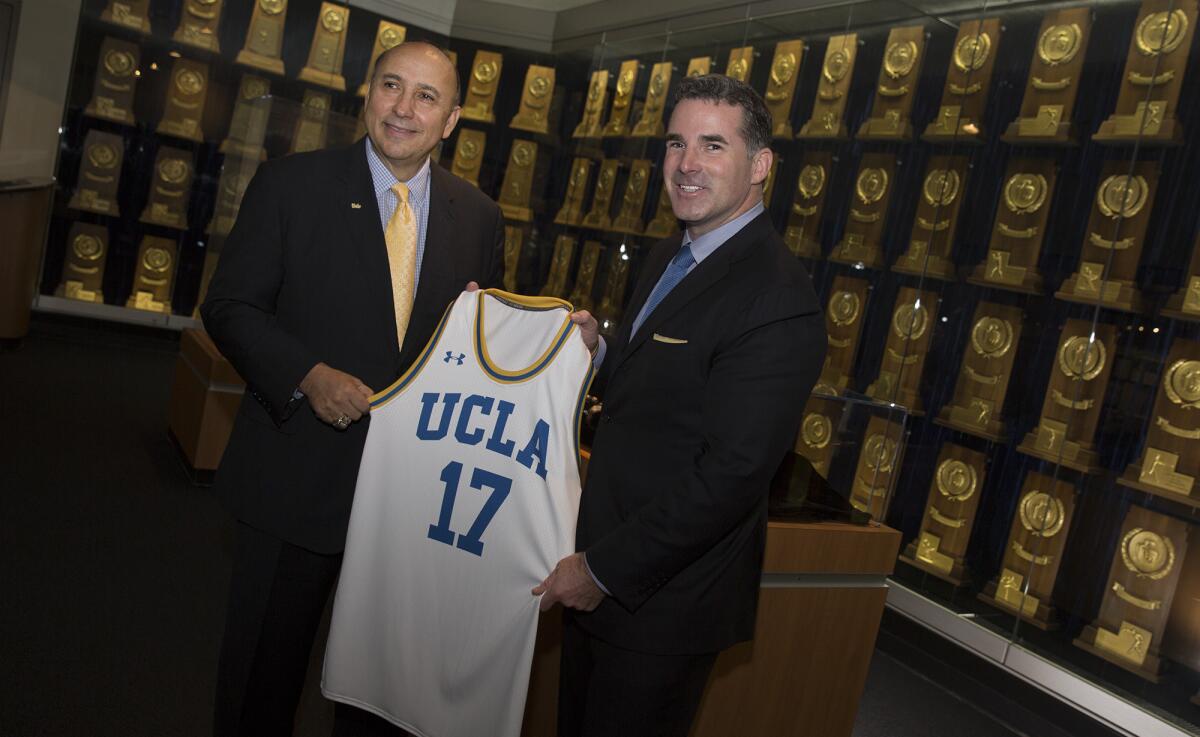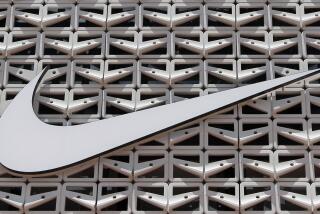Under Armour founder Kevin Plank relinquishes CEO post

Under Armour Inc. founder Kevin Plank is stepping aside as head of the company he started in his grandmother’s basement, and his successor — an executive Plank brought in two years ago — is promising a “louder brand” for the maker of athletic apparel.
Patrik Frisk, Under Armour’s president since 2017, will become chief executive Jan. 1, the company said Tuesday. Plank, 47, will remain head of the board, taking the title of executive chairman.
Under Armour shares advanced 6.4% on Tuesday. The stock had climbed 14% this year through Monday, trailing the 20% gain of the S&P 500 Index.
The CEO change comes at a logical time. Plank led Under Armour through a multiyear restructuring that he has called one of the most challenging periods for the company. Frisk, an apparel industry veteran, came aboard in June 2017 to retool Under Armour’s distribution strategy and develop its long-term growth plan.
With Under Armour ready to switch to offense from defense — amid lingering doubts about its direction — Plank chose to step aside.
“It’s something that we’ve been working on for a while, really since Patrik joined here 2½ years ago,” Plank said in an interview on Bloomberg TV. “What I think this really gives us is this ability for freedom. As Patrik kept ascending in the organization, and moving things underneath of Patrik, it was, ‘Whose hands are on the wheel?’ And I want to make sure that’s something that’s always clear. It’s impossible to be effective if that’s not the case.”
Frisk, 56, has been in the apparel and footwear industry for more than three decades, including a three-year stint as CEO of Aldo Group Inc. Before that he held a variety of executive positions at VF Corp., manufacturer of popular brands including Timberland and the North Face.
As part of the transition, Frisk will keep the title of president and join Under Armour’s board.
‘Continuity in leadership’
“As we turn the corner into 2020, what you’ll see from Under Armour is a louder brand,” Frisk told Bloomberg TV. “We believe the transition now really sets us up to be able to have continuity in leadership, consistency in execution and ultimately enables us to win.”
Plank started Under Armour in 1995 while serving as a captain of the University of Maryland football team. Frustrated with the performance of his cotton undershirt, Plank set out to make one that was lighter and would stay drier. He has said that first product was the launch of a new category in sports apparel: performance apparel.
Plank has been chairman and CEO since 1996. He also served two stints as company president, from 1996 to 2008 and from 2010 to 2017. He oversaw the company’s move to Baltimore — from a Washington, D.C., row house owned by his grandmother — and its expansion into a multibillion-dollar business. Under Armour went public in 2005 and experienced rapid growth, with sales increasing to $5 billion in 2017 from $1.1 billion in 2010.
But the company has sputtered in recent years. Increased competition at home led to falling domestic sales — and little growth over the last 2½ years. In response, the company wrote down inventory, reworked its supply chain and eliminated about 40% of its products to focus on the top-selling lines. The stock, once a highflier, fell a total of 65% in 2016 and 2017.
Recovery has been slow. While competitors embraced casual consumers and the rapid growth of “athleisure” apparel, Under Armour remained dedicated to Plank’s original goal of billing itself as a performance brand.
“Our vision of making things that people don’t know that they need, and once they have it, can’t imagine living without, needs to go through every product that we make,” Frisk said. “Everything that you buy from Under Armour has to do something. So ultimately, if it does that, and it’s beautiful, we believe that people are going to make choices about how to wear it, whenever and however.”
Job cuts
Last year, the company cut 3% of its global workforce, or about 400 jobs. It also slowed spending on big-ticket sponsorships, such as a 10-year apparel agreement with Major League Baseball, which the company backed out of before the partnership was set to launch.
Analyst Sam Poser of Susquehanna Financial Group said last week that his proprietary checks showed the company still losing shelf space at sporting goods and family footwear retailers.
“The bottom line, despite operational improvements, is that the Under Armour brand image continues to lose its luster, in our view,” Poser said. “The obsessive focus on performance products limits the consumer base, as most sneakers and sports apparel are worn for comfort and style, not for the actual intended use.”
More to Read
Inside the business of entertainment
The Wide Shot brings you news, analysis and insights on everything from streaming wars to production — and what it all means for the future.
You may occasionally receive promotional content from the Los Angeles Times.










